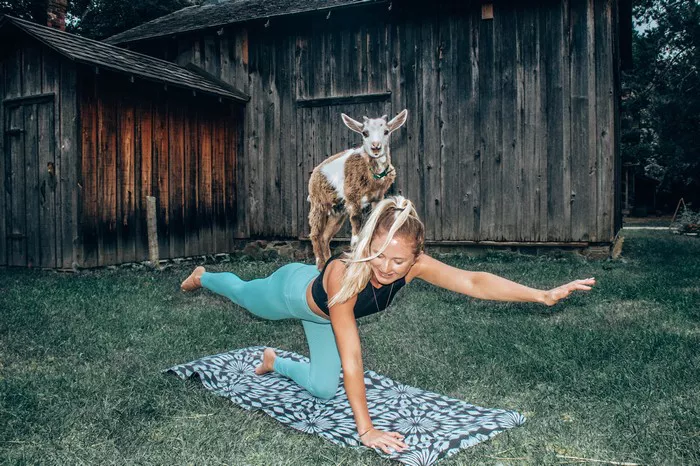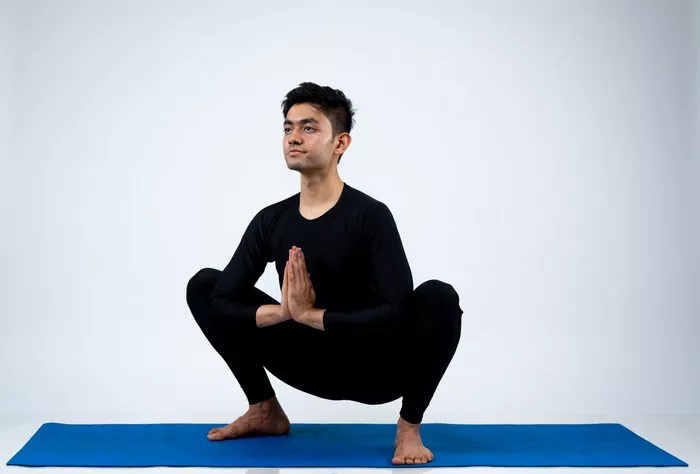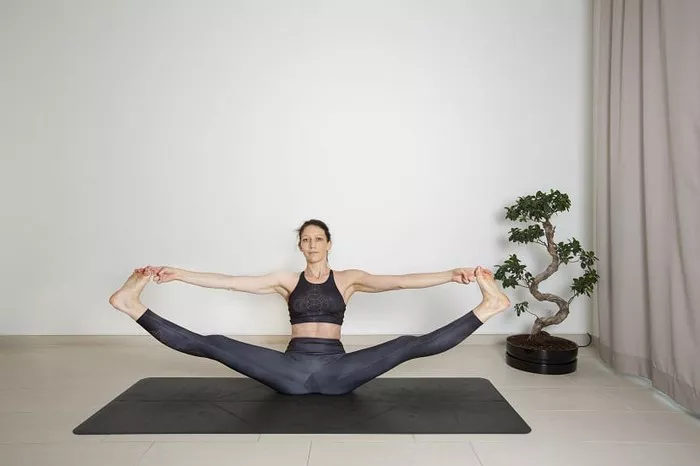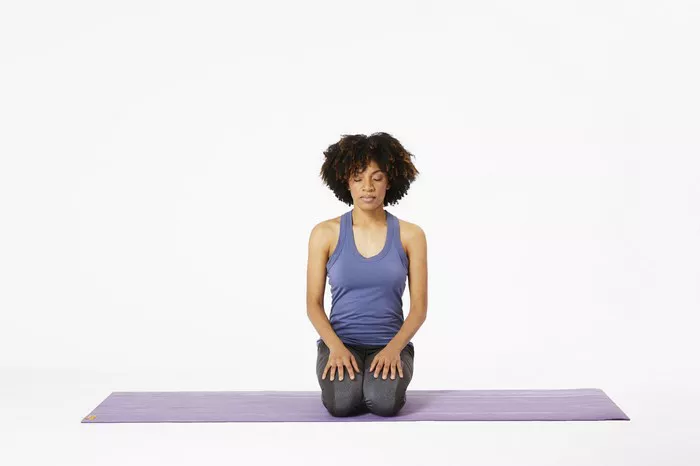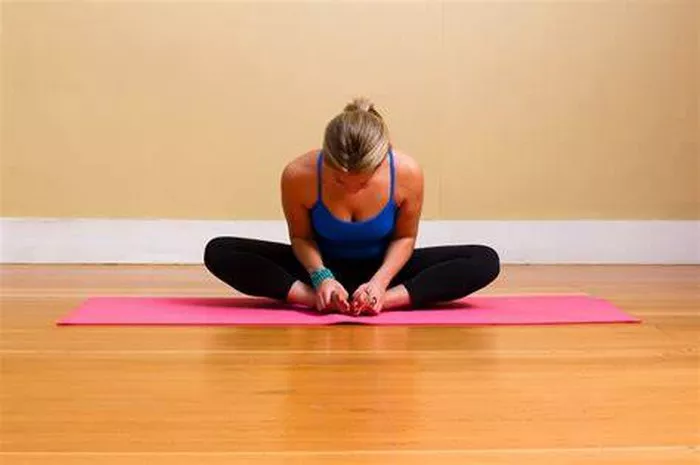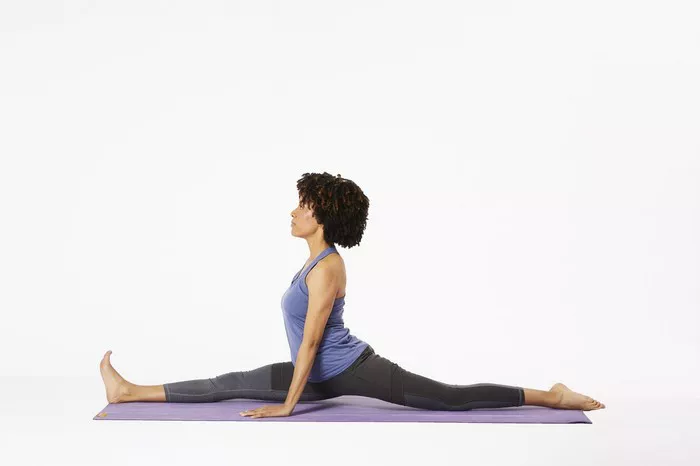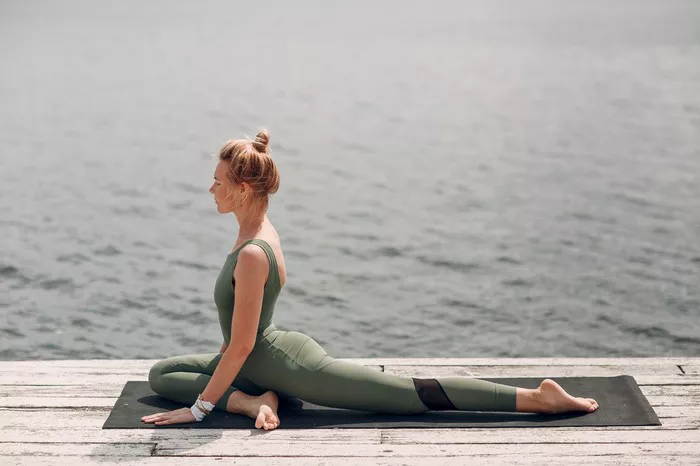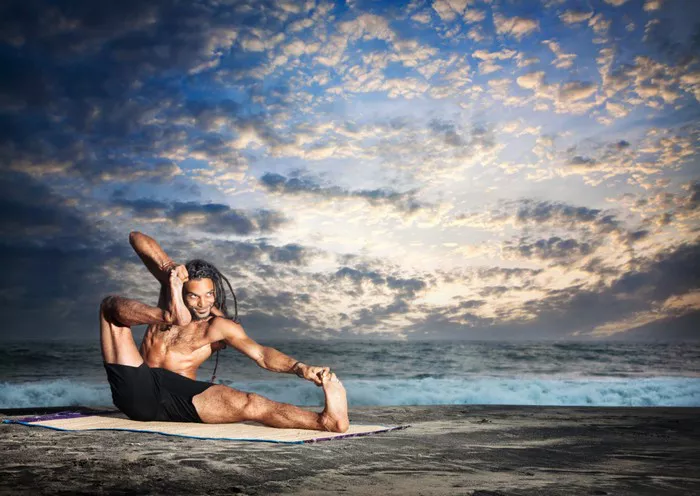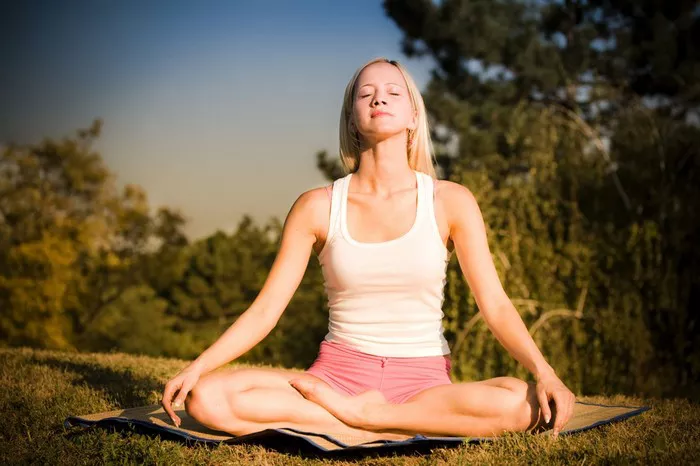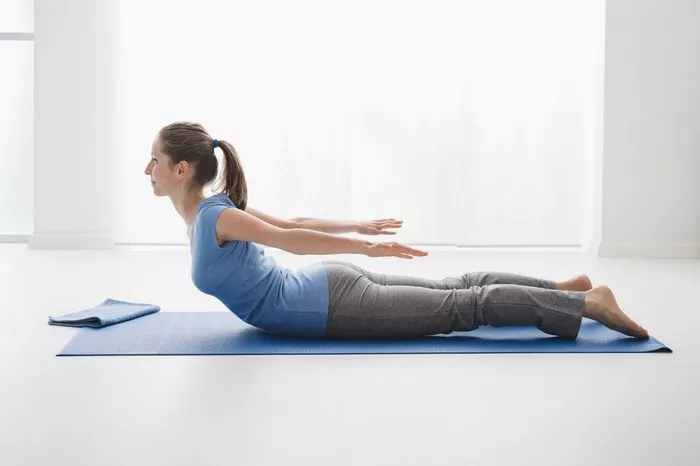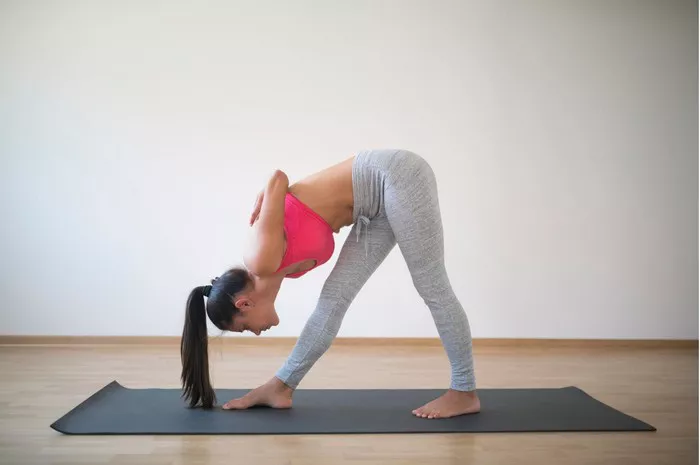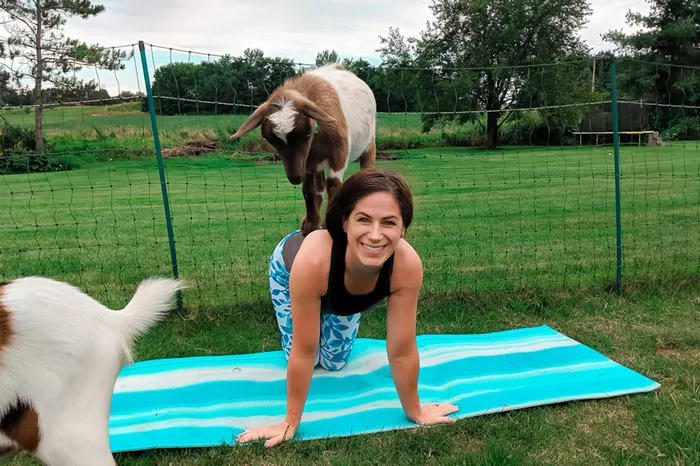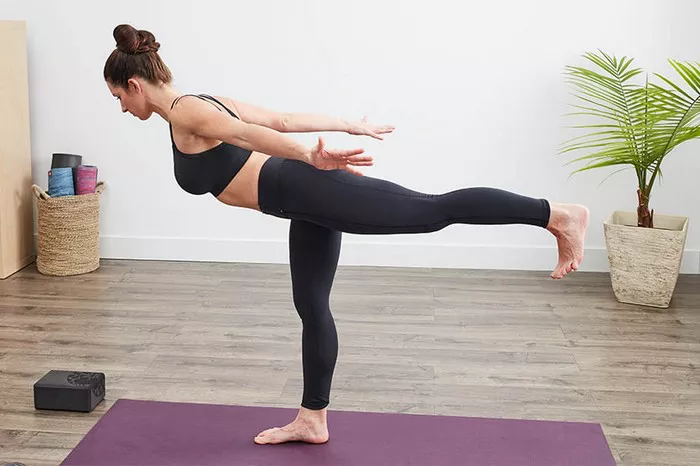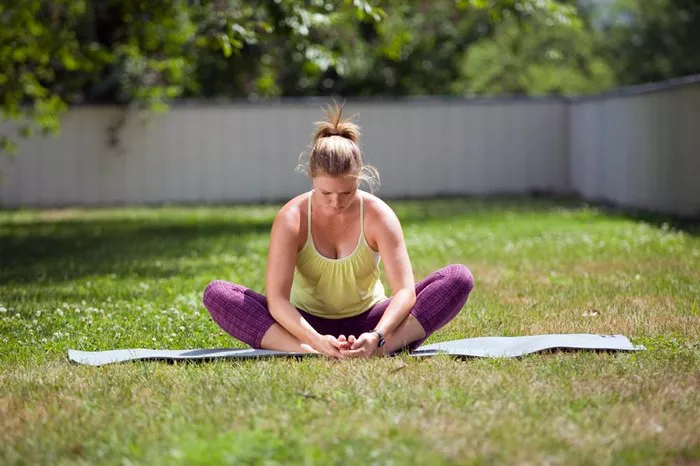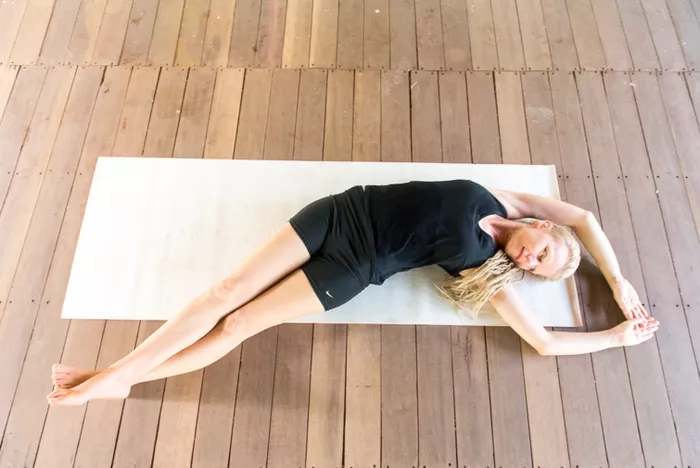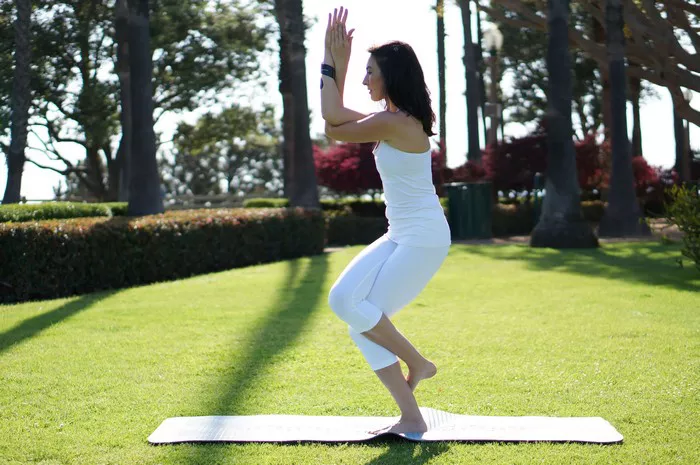Yoga offers a variety of seated postures that promote stillness, mindfulness, and physical flexibility. Two of the most recognized seated poses are Lotus Pose (Padmasana) and Easy Pose (Sukhasana). While they may appear similar to beginners, they serve different purposes and suit different levels of physical ability. Understanding the distinctions between them can help practitioners choose the pose that best aligns with their goals and body type. In this article, we will explore the differences between Lotus Pose and Easy Pose in terms of their structure, benefits, challenges, and when to use each one.
What is Lotus Pose (Padmasana)?
Lotus Pose, known in Sanskrit as Padmasana, is a classical yoga posture traditionally used for meditation and pranayama (breathing exercises). In this pose, each foot is placed on the opposite thigh, forming a symmetrical, cross-legged position that resembles a lotus flower. This posture requires significant hip flexibility and knee stability, making it more suitable for intermediate to advanced practitioners.
Lotus Pose has deep roots in yogic tradition and is often depicted in ancient texts and sculptures of meditating sages. Its symmetrical design is said to help in centering the body and mind, aiding deeper meditation. However, due to its physical demands, it should be approached with caution and proper preparation.
What is Easy Pose (Sukhasana)?
Easy Pose, or Sukhasana, is a beginner-friendly seated posture used for meditation, breathing practices, and casual seated positions in yoga classes. The practitioner sits cross-legged with the shins crossed and the feet tucked under the knees or calves. Unlike Lotus Pose, Sukhasana does not require the feet to be placed on the thighs, making it more accessible to most people.
Sukhasana is a great starting point for meditation and breathing exercises. It allows for a relaxed spine, open chest, and calm breathing without the strain that may come with more advanced poses. It can be modified with props like cushions or blocks to support the hips and knees, enhancing comfort and alignment.
Key Differences Between Lotus Pose and Easy Pose
Although both are seated, cross-legged postures, Lotus and Easy Pose have distinct differences in terms of anatomy, accessibility, and purpose. Let’s explore these differences in more detail:
1. Leg Positioning and Flexibility Requirements
- Lotus Pose: Requires extreme hip rotation and flexibility in the knees and ankles. Each foot is placed on the opposite thigh, which can be demanding on the joints.
- Easy Pose: Involves simply crossing the legs with the feet resting below the knees. Minimal flexibility is required compared to Lotus.
This makes Lotus Pose more challenging for people with tight hips or knee issues, while Easy Pose is generally safe and accessible to most practitioners.
2. Stability and Symmetry
- Lotus Pose: Offers a symmetrical base that provides stability during meditation. The even weight distribution helps in maintaining a still, upright position.
- Easy Pose: While stable, it may lead to slight asymmetries, especially if one leg is habitually placed in front of the other.
For advanced meditation practitioners, the stable nature of Lotus Pose may enhance focus and endurance during long sessions.
3. Traditional and Cultural Significance
- Lotus Pose: Holds deep spiritual and symbolic value in various Eastern traditions. It is often associated with enlightenment and purity.
- Easy Pose: Though also traditional, it is more utilitarian and lacks the iconic status of Lotus Pose.
In visual representations of spiritual practices, deities and sages are often shown seated in Lotus Pose, underscoring its sacred association.
4. Risk of Injury
- Lotus Pose: Poses a higher risk of knee and ankle injuries if performed without proper flexibility or warm-up.
- Easy Pose: Carries a low risk of injury, especially when props are used to support proper alignment.
It’s crucial to respect your body’s limits. Beginners are encouraged to start with Easy Pose and gradually work toward more complex poses like Lotus.
5. Usage in Yoga Practice
- Lotus Pose: Commonly used in advanced pranayama, dhyana (meditation), and sometimes during chanting.
- Easy Pose: Frequently used in beginner and all-level classes for meditation, breathing, or as a neutral seated position.
Yoga teachers often suggest Sukhasana to accommodate diverse student needs, making it a more inclusive option in group settings.
When to Use Each Pose
Use Lotus Pose When:
- You have developed sufficient hip, knee, and ankle flexibility.
- You are preparing for deep meditation or advanced breathing techniques.
- You want to explore traditional spiritual practices and postures.
- You can hold the pose comfortably without strain or pain.
Use Easy Pose When:
- You are a beginner or have physical limitations.
- You want to focus on relaxation or gentle breathwork.
- You need a stable and accessible seated posture for class or personal practice.
- You plan to sit for extended periods without discomfort.
How to Safely Transition Between the Two
Transitioning from Easy Pose to Lotus Pose should be done gradually and with awareness. Here are a few steps to help ease the process:
- Step 1: Practice hip-opening stretches like Butterfly Pose (Baddha Konasana) and Pigeon Pose (Eka Pada Rajakapotasana).
- Step 2: Use Half Lotus (Ardha Padmasana) as an intermediate step. Place one foot on the opposite thigh while the other stays below the knee.
- Step 3: Incorporate daily flexibility routines to gently increase range of motion.
- Step 4: Consult a qualified yoga instructor to ensure proper alignment and avoid strain.
Never force your legs into a position that causes pain. Progress at your own pace.
The Role of Props and Modifications
Props can greatly enhance the comfort and safety of seated poses:
- For Easy Pose: Use a folded blanket or yoga block under the hips to elevate the pelvis, encouraging a straight spine and relaxed knees.
- For Lotus Pose: A cushion can reduce pressure on the knees, while a rolled towel behind the ankles can minimize joint strain.
These tools support correct alignment and reduce the likelihood of injury, especially during long meditation sessions.
Anatomical Considerations
Understanding the anatomy involved in each pose helps practitioners respect their bodies:
- Lotus Pose: Involves extreme external rotation of the hip joint. The knees act as levers and are vulnerable if the hips are tight.
- Easy Pose: Requires less hip rotation and allows the knees to fall naturally, making it biomechanically safer for most people.
Consulting a physical therapist or yoga therapist can help assess whether your body is ready for poses like Padmasana.
Benefits of Lotus Pose
Lotus Pose offers multiple benefits, particularly for seasoned practitioners:
- Promotes deep meditation by stabilizing the body.
- Enhances concentration and mental clarity.
- Encourages proper spinal alignment.
- Symbolically connects the practitioner to traditional yogic values.
Despite its benefits, the pose should only be pursued with proper training and adequate physical readiness.
Benefits of Easy Pose
Easy Pose is not merely a beginner option; it carries its own valuable benefits:
- Encourages mindfulness and relaxation.
- Supports healthy breathing patterns.
- Accessible to a wide range of body types and abilities.
- Can be maintained comfortably for longer periods.
For most practitioners, Sukhasana is a practical and effective choice for achieving meditative focus and calm.
Conclusion
Both Lotus Pose and Easy Pose offer unique advantages for meditation and seated yoga practices. The choice between them depends on your physical flexibility, experience level, and practice goals. While Lotus Pose embodies the traditional essence of meditative stillness, Easy Pose provides an inclusive and comfortable alternative for people at any stage of their yoga journey. Ultimately, the best pose is the one that allows you to sit comfortably and focus inward without distraction.
FAQs
What if I can’t do Lotus Pose due to tight hips or knees?
It’s perfectly fine to skip Lotus Pose. Use Easy Pose or try Half Lotus as a stepping stone. Focus on hip-opening stretches and consult a yoga teacher before progressing.
Is Easy Pose effective for meditation?
Yes, Easy Pose is an excellent position for meditation, especially when supported with props. It encourages a relaxed but upright posture conducive to mindfulness.
Can Lotus Pose cause injury?
Yes, if performed without adequate flexibility, Lotus Pose can strain the knees or ankles. Never force the pose, and warm up properly before attempting it.
How long should I sit in either pose?
Start with 5–10 minutes and gradually increase as your body adjusts. Always listen to your body and switch positions if discomfort arises.
Should I use props for both poses?
Yes, props can enhance alignment and comfort in both poses. Elevating the hips or cushioning the knees can make long sitting more sustainable and safe.
Related Topics:

